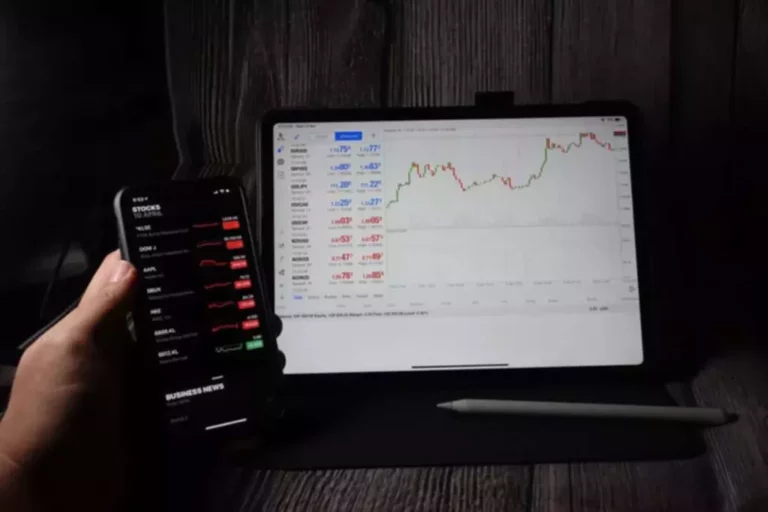Balancer offers multi-asset pools to increase exposure to totally different crypto belongings and deepen liquidity. Curve Finance is an automatic market maker-based DEX with a singular positioning of being a dominating stablecoin change. This permits Curve to be a reliable DEX with low slippage since prices of stablecoins are often less volatile than many different cryptocurrencies (usually inside a worth band of $0.ninety five – $1.05). With centralized exchanges, a buyer can see all the asks, corresponding to the prices at which sellers are willing to sell a given cryptocurrency. While this offers more choices for a purchaser to buy crypto assets, the ready time for an ideal match may be too lengthy for their liking.

Although impermanent loss is an inherent threat in phrases of decentralized buying and selling, this danger can be somewhat restricted by using flexible pools or via conservative user conduct. Both classes use non-custodial smart contracts, and a deterministic pricing rule is applied between two or more pools of tokens. A DeFi App can implement one kind of AMM mannequin or a combination of a quantity of AMM fashions. The process of incomes rewards by offering liquidity is also referred to as liquidity mining or yield farming.
Amm Transaction Course Of
It’s a factor of the automated nature of DEFI and the volatility of the value of asset pairs. Curve Finance applies the AMM mannequin to Ethereum-based tokens but particularly to low-risk Stablecoin pairs or pairs of coins with equal or comparable value. 50% of the charges generated from swaps go to the Liquidity Providers whereas the other half goes to holders of the underlying governance token CRV with rewards increasing relying on how lengthy CRV is locked for. Through oracles, DEXs also can focus liquidity inside these value ranges and enhance capital effectivity.

In order for an automatic order e-book to supply an correct value, it wants sufficient liquidity – the quantity of buy/sell order requests. If liquidity is weak then there will be huge gaps in the price that users are prepared to buy and sell at. This is recognized as price inefficiency or Slippage – the place the value that a commerce is placed at differs from the executed worth as a outcome of there is inadequate liquidity to cover the whole order. Decentralised Exchanges as an alternative rely on AMMs working on blockchains like Ethereum to set the prices of asset pairs and keep enough liquidity. To commerce with fiat currency, users usually need to go through a centralized exchange or different on/off-ramp companies to convert fiat to cryptocurrency before interacting with AMMs.
Automated Market Maker: The Cornerstone Of The Decentralized Crypto Exchange Business
These protocols permit crypto participants to freely swap all kinds of cryptocurrency tokens. The constant, represented by “k” means there is a fixed balance of property that determines the worth of tokens in a liquidity pool. For instance, if an AMM has ether (ETH) and bitcoin (BTC), two risky assets, each time ETH is bought, the worth of ETH goes up as there’s less ETH in the pool than earlier than the acquisition. The pool stays in constant balance, the place the entire value of ETH within the pool will all the time equal the entire value of BTC in the pool. Visually, the prices of tokens in an AMM pool observe a curve decided by the formulation. Also aiming to extend liquidity on its protocol, DODO is utilizing a model known as a proactive market maker (PMM) that mimics the human market-making behaviors of a conventional central limit order e-book.
Instead, they make use of sensible contracts that management special crypto asset pools which are specifically designed to supply the liquidity wanted to facilitate seamless trading. In all different variations of CFMM, liquidity providers present assets which are pooled in an open good contract. A buying and selling pair entails two or more complimentary pools of crypto property or tokens. As a sub-lesson of decentralized exchanges, (objectively an important DeFi use case) we will resume overlaying DEXs by additional exploring automated market makers (AMM). On AMM platforms, as a substitute of trading between buyers and sellers, users commerce towards a pool of tokens — a liquidity pool.

Over the final couple of years, AMMs have proven to be innovative techniques for enabling decentralized exchanges. In this time, we have witnessed the emergence of a slew of DEXs which might be driving the continuing DeFi hype. While this does not imply that the approach is flawless, the developments recorded in the last 12 months are indicative of the several possibilities that AMMs present. If traders purchase BTC they diminish that aspect of the pool and improve the pool of USDT rising the relative price of BTC. This also incentivises LPs to provide extra BTC because liquidity provision is predicated on the proportion of the overall pool you add, not the specific price at the time. But the principle mechanism that centralised exchanges make use of to generate liquidity is through external market makers.
Amm Explained: Automated Market Makers & How They Work
An automated market maker, in any other case known as an AMM, is a means of providing cryptocurrency buying and selling without the necessity for an intermediary. AMMs mix Smart Contracts and incentives for liquidity provision to automate cryptocurrency buying and selling and disrupt the normal centralised exchange model, replacing it with the DEX. In this fixed state of balance, shopping for one ETH brings the worth of ETH up slightly alongside the curve, and promoting one ETH brings the value of ETH down barely along the curve. It doesn’t matter how unstable the price https://www.xcritical.in/ gets, there will finally be a return to a state of balance that reflects a comparatively correct market price. Hybrid CFMMs enable extraordinarily low price impact trades by using an change rate curve that’s largely linear and turns into parabolic solely as quickly as the liquidity pool is pushed to its limits. Liquidity providers earn extra in charges (albeit on a decrease fee-per-trade basis) as a end result of capital is used extra effectively, whereas arbitrageurs still profit from rebalancing the pool.
AMMs instead rely on liquidity that is sourced from different customers and pooled collectively, an idea known as a liquidity pool. In liquidity pools, liquidity providers “lock” equal quantities of two or more tokens into a wise contract for use as liquidity for trades from different users. AMMs have become the first approach to trade tokens throughout the DeFi ecosystem, and heaps of use a method called “constant product market maker” to maintain the prices of tokens traded in liquidity pools constant.
When there are three or more tokens in a pool, it’s best to use the constant mean model; the fixed is the geometric mean of the product of the portions of the number of tokens in the pool. Both monitor the best paths for gathering liquidity at one of the best value potential. You can check out good order routing by registering an account on Shrimpy and swapping tokens. Traditional exchanges require patrons and sellers to satisfy at an overlapping value point on a centralized order book. In some cases the place there aren’t sufficient counterparties to trade with, the market is alleged to be illiquid or susceptible to slippage. Slippage happens when the processing of enormous order volumes drives the costs of an asset up or down.
When a consumer desires to commerce, they swap one token for another immediately via the AMM, with costs decided by the pool’s algorithm. Automated market makers (AMM) are sensible contracts that power all decentralized crypto exchanges (DEXs) as properly as other decentralized finance (DeFi) protocols. While there are a selection of approaches to AMMs as exemplified by Uniswap and Balancer, the precise fact remains that they require liquidity to function properly and negate slippages.
As per the method, if the availability of 1 token (x) increases, the provision of the other token (y) should decrease, and vice versa, to uphold the constant value (k). You comply with put one thousand forks into the special ship, whereas the residents of the other island agree to add 1000 spoons. So, it’s definitely no secret that Automated Market Making is probably one of the more-difficult topics within the cryptocurrency world. That’s mostly due to all of the technicalities surrounding it, in addition to the truth that it’s covered with industry-specific jargon. More recently, we’ve seen the emergence of DeFi protocols like Olympus DAO, which search to create ‘protocol-owned liquidity’ solutions for the DeFi sector. In the TSMM or Token Swap model, the swapping between two tokens is completed with the help of an intermediary token.
Constant Imply Market Maker (cmmm)
The Market Depth metric is usually described as the quantity required to move the price +/-2%. The larger that volume the higher confidence you can have that your trade will not transfer the value away out of your desired entry or exit. DEX’s are a core element of DEFI – decentralised finance – generating 24hr buying and selling volume in extra of $2bn, according to Coingecko.
- The aforementioned drawbacks however, automated market makers are already proving to be a success.
- Liquidity providers take on the risk of impermanent loss, a potential loss that they might incur if the worth of the underlying token pair drastically changes in both course.
- Automated market makers are a number of the earliest functions of decentralized finance and remain among the many most prominent DeFi merchandise right now.
- A traditional market maker is a person or an institution that gives liquidity to a market by placing each buy and sell orders on a trading platform using an order guide.
All that this ship needs for this to work is an initial supply of utensils on both ends – say, one thousand forks, and a thousand spoons. This mannequin is implemented along with the token swap mannequin in Bancor V2 protocol. This model is much like the CPMM, but the multiplication within the formula is changed with addition. The liquidity always equals the entire quantity of token A plus the whole quantity of token B. Governance tokens are cryptocurrencies that characterize voting power on a DeFi protocol. An straightforward approach to perceive AMM-based exchanges is to consider how they differ from conventional exchanges.
As such, these protocols incentivize liquidity suppliers by offering them a share of the fee generated by liquidity swimming pools and governance tokens. In other words, you get to receive transaction fees whenever you provide capital for operating liquidity swimming pools. The most popular instance of an AMM is Uniswap, a decentralized trade constructed on Ethereum. Using Uniswap, users have more than 1,500 ERC-20 buying and selling pairs to select from and there is presently more than $3.45 billion locked in liquidity pools by customers.

Many of first-generation AMMs are limited by impermanent loss and low capital effectivity, which impacts each liquidity suppliers and traders. Market makers are entities tasked with providing liquidity for a tradable asset on an change that will in any other case be illiquid. Market makers do that by shopping for and promoting assets from their own accounts with the aim of creating a revenue, typically from the spread—the hole between the highest buy offer and lowest promote supply. Their buying and selling activity creates liquidity, reducing the worth impression of larger trades. Kyber Network is a liquidity aggregator that connects to various AMMs and DEXs. It aims to supply users with one of the best out there rates by sourcing liquidity from multiple platforms.
